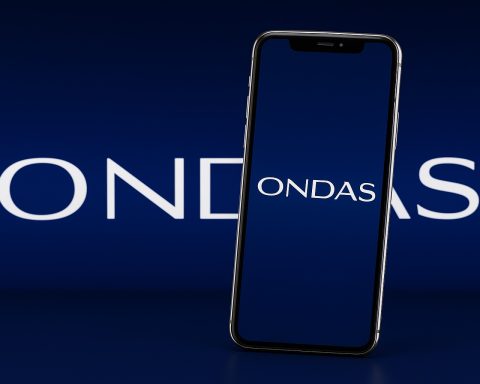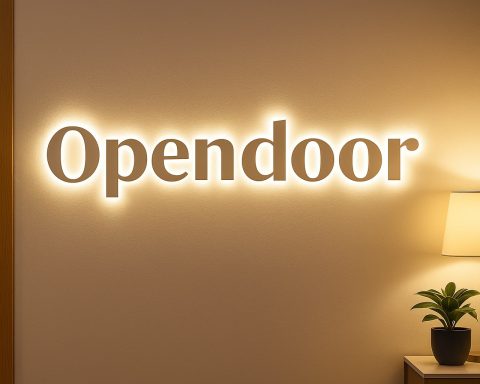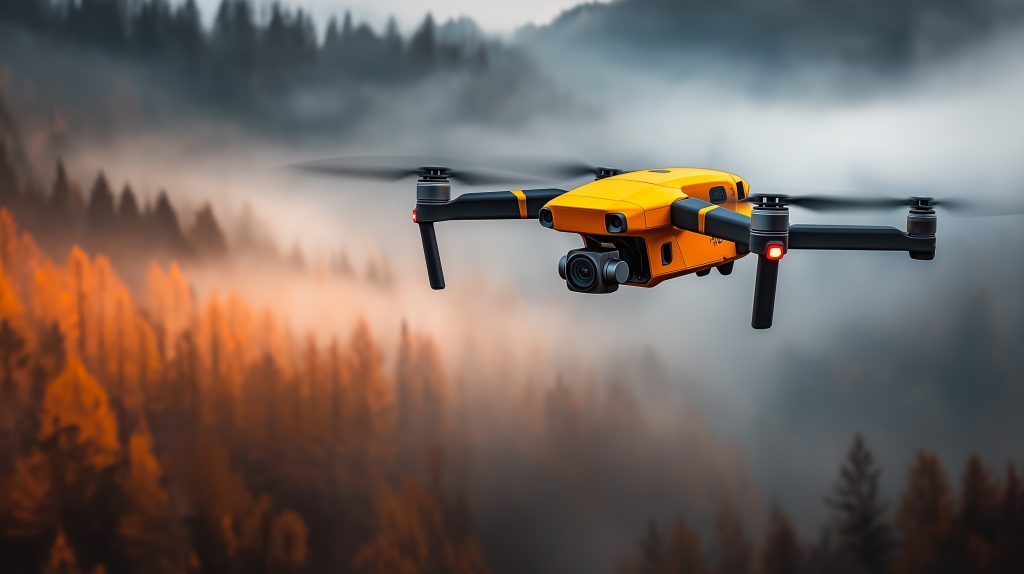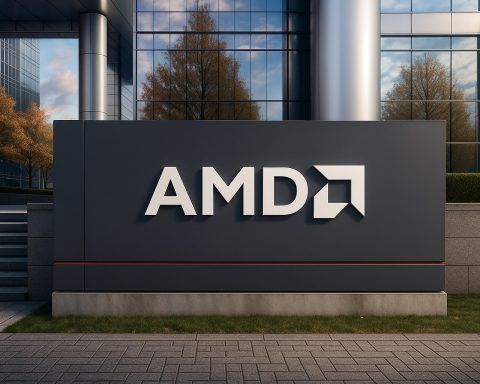- As of 2023, Grenada’s internet penetration was about 77–80% of a ~125,000 population, roughly 98,000 online.
- Mobile subscriptions exceed Grenada’s population at about 107%, reflecting widespread multiple-SIM usage.
- The market is a duopoly dominated by Flow and Digicel, with Flow accounting for roughly 82% of internet subscriptions/traffic and Digicel about 17%.
- Digicel launched 4G LTE in Grenada in late 2018 on 700 MHz, with Flow following later to upgrade mobile data; as of 2025, no 5G service is live.
- Fiber-to-the-Home is being rolled out by Flow and Digicel, with Digicel offering up to 1 Gbps Home Fiber and Flow anticipating Carriacou FTTH by late 2024.
- Tarana-fixed wireless access deployed by Flow in late 2024 in Carriacou delivers up to 100 Mbps download and 25 Mbps upload.
- Starlink signals reach Grenada with regulatory license pending as of November 2024; Starlink is expected to offer about 50–200 Mbps with 20–40 ms latency, with kits around USD 600 and monthly about USD 100–130, though Internet Society data showed 0% Starlink market share in Grenada as of early 2025.
- Flow’s JUMP program, launched in June 2023, targets 1,500 low-income households with internet, devices, and digital training for EC$20 per month, subsidized by Flow and government with about EC$54 per connection.
- CARCIP (2013–2018) built fiber backbones to 769 public sites, contributing to broadband penetration rising to about 57% by 2020 (up from ~30% beforehand).
- Grenada has one Internet Exchange Point (GREX), with about 64% of local networks connected to it, improving local traffic exchange and resilience.
Overview of Internet Access in Grenada
Grenada has achieved a relatively high level of internet penetration, with roughly 77–80% of the population online as of 2023 [1] [2]. This equates to about 98,000 individuals using the internet out of a population of ~125,000 [3] [4]. Internet access is common among both residential and business users, though there remains a minority (around 20–22% of citizens) who are still offline, often in rural areas or older demographics [5]. The country’s telecom infrastructure has improved in recent years – for example, median fixed broadband download speeds increased by over 30% in 2022, reaching roughly 64 Mbps by early 2023 [6]. Mobile cellular usage is widespread (active mobile subscriptions exceed the population count at ~107%, due to many users having multiple SIMs) [7], providing basic internet connectivity via 3G/4G networks even in areas without fixed lines. Overall, internet adoption is strong in Grenada, but like many small island states, there is an ongoing effort to extend affordable high-speed access to the entire population, including remote communities. Business users, especially in urban centers, generally have access to the same broadband services as consumers, though they may opt for dedicated business-class connections or higher-tier service packages for reliability and speed.
Major Internet Service Providers (ISPs)
Grenada’s internet services market is effectively a duopoly, served by two major providers: Flow (the brand of Cable & Wireless Communications/Liberty Latin America) and Digicel. Flow is the incumbent telecom operator, historically the landline telephone monopoly, and today it offers fixed broadband, mobile, and cable TV services. Digicel entered Caribbean markets in the early 2000s to compete with Cable & Wireless, and in Grenada it has become a strong competitor especially in mobile service [8]. According to Internet Society data, Flow (under its ASN “CCGL”) accounts for roughly 82% of internet subscriptions/traffic, while Digicel Grenada has about 17% – highlighting Flow’s dominance in fixed broadband [9]. No other significant consumer ISP exists; the remaining ~1% is attributed to minor networks or niche providers [10]. In the mobile sector, both Flow and Digicel operate national GSM/3G/4G networks. Digicel launched 4G LTE in Grenada in late 2018 on 700 MHz spectrum [11], and Flow followed suit (after initially objecting to Digicel’s LTE license on regulatory grounds) in order to upgrade its mobile data offerings. Both companies today offer comparable mobile coverage and speeds, leaving Grenadian consumers with essentially two choices for any type of internet access – a situation the Internet Society characterizes as “very poor” in terms of market competition [12].
- Flow (Cable & Wireless/Liberty LA) – Flow provides fixed-line broadband over several technologies (legacy DSL and HFC cable, and increasingly fiber optic) as well as mobile services. It inherited the cable TV network established by Columbus Communications (Flow) in 2008 and the telephone network of Cable & Wireless. Flow is the leading ISP by subscriber share, leveraging its extensive infrastructure. On the fixed side, Flow has traditionally offered ADSL and cable modem broadband, and as of mid-2020s it is rolling out Fiber-to-the-Home (FTTH) in stages [13]. It also offers fixed wireless broadband in specific cases – for example, in 2024 Flow deployed a wireless solution (Tarana Wireless) in the smaller islands of Carriacou and Petite Martinique as an interim step before fiber is laid, delivering up to 100 Mbps service to homes wirelessly [14]. Flow also operates a 2G/3G/4G mobile network covering Grenada and the sister isles, and offers bundle packages combining home internet, mobile, and TV. As the incumbent, Flow has invested in upgrading broadband speeds – notably spending ~XCD 15 million (~USD 5.6 M) around 2019 to improve its network and raise customers’ internet speeds from 15 Mbps to 50 Mbps in many areas [15].
- Digicel – Digicel Grenada began as a mobile-only operator but has expanded into the home broadband arena in recent years. It launched Grenada’s first LTE mobile data service in 2018 [16] and has aggressively marketed mobile data plans. More recently, Digicel introduced its “Digicel+” fiber broadband services for homes and businesses, becoming a direct competitor to Flow for fixed internet. Digicel has invested in FTTH especially in areas that were underserved by Flow’s infrastructure. For instance, following the 2023 hurricane damage in Carriacou, Digicel committed over $3 million to rebuild and upgrade networks, deploying “ultra-fast, full-fibre broadband” on those islands with advertised speeds up to 1 Gbps for homes [17] [18]. On the main island of Grenada, Digicel offers fiber bundles (branded Digicel+ Home Fibre) at various speeds (e.g. 250 Mbps and up) along with IPTV (Digicel Play/TV) and landline options [19]. Like Flow, Digicel also serves the business market with dedicated connectivity solutions (its Digicel Business unit provides corporate internet, VPN, and other managed network services) [20]. Overall, Digicel’s presence has driven competition, especially on mobile and now in high-speed fiber, which benefits consumers but also led to disputes – such as Flow’s 2018 legal challenge of the regulator’s award of an LTE license to Digicel [21]. Today, both ISPs are pushing to extend fiber and 4G coverage, while preparing for future technologies (e.g. both are likely candidates to launch 5G when spectrum and market conditions allow, although no 5G service is live in Grenada as of 2025).
Aside from Flow and Digicel, there are no other major retail ISPs in Grenada. The government does maintain some networks (for example, under the World Bank-funded CARCIP program, fiber rings and government-owned backbones were built), but these are not commercial ISPs for the public. A small company or two may offer niche services (the ASN “GDGR” with ~1% share likely corresponds to a minor provider or a multi-homed enterprise network) [22], but their impact on the consumer market is negligible. For satellite internet (discussed further below), there is no local provider; however, external operators like SpaceX’s Starlink have begun to register presence (SpaceX has an autonomous network number in Grenada’s routing tables, albeit with 0% market share so far) [23].
Internet Access Technologies in Grenada
Grenada’s internet infrastructure employs a mix of technologies to reach users. The available access modes include fixed wired broadband (over fiber, cable, or telephone lines), wireless/mobile broadband, and newer satellite options. Below is an outline of the key technologies, and a comparative summary table:
- Fiber-Optic Broadband (FTTH): Fiber-to-the-Home is the emerging standard for high-speed internet in Grenada. Both Flow and Digicel have begun deploying fiber in the most populated areas (e.g. around St. George’s and other towns, as well as parts of Carriacou) [24] [25]. FTTH offers the fastest speeds currently available to the public – often on the order of hundreds of Mbps up to 1 Gbps download. For example, Digicel’s home fiber boasts speeds “up to 1 Gbps” on its top-tier plans [26], and Flow’s new fiber rollouts are expected to offer similar gigabit-capable service. Upload speeds on fiber can also be high (sometimes symmetric to download or in the hundreds of Mbps). Fiber connections are very reliable and have low latency, suitable for bandwidth-intensive uses by both households and businesses (e.g. 4K streaming, video conferencing, cloud applications). The main limitation is that FTTH coverage is still being expanded – not all neighborhoods have fiber yet, especially in rural villages. However, expansion is ongoing; Flow anticipated its FTTH network would reach customers in Carriacou by late 2024 [27], and on the mainland both ISPs continue to replace copper/coax with fiber incrementally.
- Cable Broadband (HFC): Prior to fiber, Flow’s chief fixed broadband platform was its cable TV network using Hybrid Fiber-Coaxial (HFC) technology. This system (inherited from Columbus/Flow since 2008) covers a large portion of Grenada’s population centers. Cable broadband can deliver high speeds, though shared among neighbors on each node. In fact, Grenada was one of the early Caribbean islands to get 100 Mbps residential service via cable; Flow announced in 2013 that it was offering “up to 100 Mbps” to customers as part of a speed upgrade campaign (at that time, a leap from previous 40 Mbps service) [28]. Today, Flow’s cable network likely supports hundreds of Mbps (using DOCSIS 3.x standards) – for instance, Flow has advertised tiers like 150 Mbps and higher on some bundled plans. However, as fiber deployment proceeds, HFC is gradually being supplanted or supplemented by FTTH in many areas. In terms of coverage, the cable network historically passed most homes in the capital and larger towns and along the western corridors; more remote or rural settlements might never have had cable, relying on phone lines instead. Cable broadband is generally reliable but can be susceptible to congestion during peak times if nodes are oversubscribed. Latency on cable is low (suitable for gaming/VoIP), though not quite as low as fiber. Overall, where available, cable provided a solid option for broadband and still backs up Grenada’s connectivity in areas not yet fiber-enabled.
- DSL (Digital Subscriber Line) over Copper: DSL internet is delivered over the traditional telephone lines maintained by Flow. In the 2000s and 2010s, ADSL2+ was the main fixed internet option in many parts of Grenada. Its speeds tend to be lower than cable or fiber – typically ranging from a few Mbps up to ~10–20 Mbps on ADSL, and potentially up to ~50 Mbps on VDSL if short loops are in place. Flow did upgrade some of its DSL infrastructure, which helped increase top speeds to around 50 Mbps in certain areas by late 2010s [29]. However, DSL performance is distance-sensitive and many Grenadian subscribers on copper still experience modest speeds (often under 10 Mbps in outlying areas). Flow’s investment of XCD 15 million in network upgrades around 2019 improved DSL throughput and reliability, bringing many customers from 15 Mbps to 50 Mbps packages [30], but DSL cannot compete with fiber in the long run. As such, DSL is effectively a legacy technology; it remains crucial for some rural users and as a fallback, but both Flow and government initiatives (like CARCIP) have aimed to replace or bypass copper with fiber optic links [31] [32]. In terms of reliability, DSL is decent but can be affected by line noise, and outages may occur especially on aging lines after storms. It also usually has low upload speeds (a few Mbps), limiting its usefulness for modern two-way applications.
- Mobile Broadband (3G/4G/LTE): Mobile internet via cellular networks is widely accessible across Grenada, including the smaller islands. Both Digicel and Flow operate GSM-based networks with nationwide 2G (for basic calls/SMS), 3G (UMTS/HSPA), and 4G LTE coverage on most of the populated territory [33]. Mobile broadband is a critical component of Grenada’s internet access ecosystem because it reaches virtually everywhere people live – covering many rural areas that lack wired broadband infrastructure. 4G LTE service in Grenada can offer download speeds on the order of tens of Mbps (actual speeds vary with signal and network load; users in strong coverage areas might see 20–60 Mbps, whereas in fringe areas or busy cells speeds drop significantly). Latency on 4G is around 30–50 ms, suitable for most uses (though higher than fiber’s ~5–10 ms). An important note is that as of mid-2025, 5G mobile technology has not yet been launched in Grenada; there is no commercial 5G service, and telecom regulators have been focusing on improving 4G reach and quality first. In fact, Grenada’s telecom authority had to resolve spectrum and licensing issues to get both carriers onto 4G – Digicel went live in 2018, while Flow’s LTE roll-out trailed amidst some regulatory wrangling [34]. Now that both have 4G, customers benefit from mobile data almost everywhere: one can stream or do video calls on a smartphone in the capital or even on smaller islands like Petite Martinique (which Digicel and Flow reconnected quickly after hurricane damage, restoring 94% of cell sites within 4 days) [35]. Mobile data plans are widely used, though heavy usage can be expensive due to data caps. Many residents use mobile broadband as a complement to home broadband or, for some low-income users, a substitute when they cannot afford fixed service. Businesses also rely on mobile broadband for redundancy (failover connections) or for connectivity on the move. Overall, mobile broadband offers ubiquity and convenience, but compared to fixed broadband it has lower consistent speeds and can suffer from congestion or outages if cell towers lose power (e.g. during storms).
- Fixed Wireless Access: Besides mobile, there are some fixed wireless solutions in use. For example, Flow’s deployment of a Tarana Wireless system in late 2024 in Carriacou is a fixed wireless access (FWA) service. It uses roof-mounted receivers to deliver home internet (in this case offering up to 100 Mbps download / 25 Mbps upload for an introductory price of EC$60) without needing a physical cable line [36]. This kind of wireless broadband can quickly provide coverage to areas where laying fiber or cable is not immediately feasible (such as small islands or rugged terrain). In the past, Digicel also experimented with WiMAX and other FWA in some Caribbean markets, though in Grenada its focus shifted to true fiber. Fixed wireless is generally reliable if line-of-sight is good, but it can be affected by environmental factors (rain, obstacles) and typically requires a technician installation. It fills niche gaps in coverage and is part of the toolkit for expanding internet access, especially under universal access programs or post-disaster recovery scenarios.
- Satellite Internet: Satellite connectivity is an increasingly viable option in Grenada, especially with the advent of low-earth-orbit (LEO) satellite constellations. Traditionally, satellite internet in the Caribbean meant using geostationary satellites (e.g. VSAT services) which had high latency (600+ ms) and were very costly – used only by remote enterprises, boats, or as a last resort for rural connectivity. Uptake of those legacy satellite services in Grenada was minimal among the general population. However, in the last couple of years, SpaceX’s Starlink LEO satellite service has begun making inroads across the region. As of late 2024, Starlink listed Grenada as a target market and planned to enable coverage by 2025 [37]. Indeed, Starlink signals already technically reach Grenada (the satellite footprint covers the island), and some early adopters (such as yacht owners and tech enthusiasts) have reportedly used Starlink Roam units in Grenadian waters with success (anecdotally reporting high-speed, stable connections suitable for video calls even on a boat). Official availability is pending local regulatory clearance – Starlink did not yet hold a full operating license in Grenada as of Nov 2024 [38]. Once authorized, Starlink is expected to offer download speeds of ~50–200 Mbps and much lower latency (~20–40 ms) than traditional satcom [39] [40]. This could be a game-changer for underserved areas: any household with a clear view of the sky could install a Starlink kit and get broadband, regardless of island geography. Aside from Starlink, other satellite projects like OneWeb are also on the horizon – OneWeb’s LEO network (accessible via distributors like GlobalTT) can deliver around 100–200 Mbps and is aimed at enterprise or government use in remote locations [41] [42]. Satellite internet’s advantages are 100% coverage and independence from local infrastructure (useful for disaster resilience – e.g. after hurricanes when terrestrial networks might be down, satellite can keep communities connected). The downsides remain equipment cost (hundreds of USD for a terminal) and subscription fees (Starlink’s monthly fee in the region is expected to be similar to US pricing, around USD $100–$130). Also, weather (heavy rain) can degrade the signal slightly. In Grenada, where most people live near existing networks, satellite will likely be a complement for remote pockets (e.g. a few mountain villages or very small islets) and for redundancy. The general uptake is still nascent – as reflected in Internet Society’s data, Starlink had effectively 0% market share in Grenada in early 2025 [43]. But interest is growing, and government and businesses are exploring satellite for closing the remaining digital divide.
Comparison of Technologies: The following table summarizes the main internet access technologies in Grenada, comparing their typical speeds, coverage, and reliability:
| Technology | Providers in Grenada | Typical Speeds (Download/Upload) | Geographic Coverage | Reliability & Latency |
|---|---|---|---|---|
| Fiber (FTTH) | Flow, Digicel | 100–1000 Mbps down / 100 Mbps+ up (gigabit-tier on top plans) [46]. | Growing coverage in urban and suburban areas; FTTH available in St. George’s and selected towns, expanding to smaller islands by 2024 [47]. | Very high reliability; low latency (~5–10 ms). Not prone to distance degradation. Power backup needed at hubs for uptime. |
| Cable (HFC) | Flow | 50–300 Mbps down / 5–50 Mbps up (node-dependent). Flow offered up to 100 Mbps since 2013 [48], and higher with DOCSIS3.1 upgrades. | Cable network passes most densely populated areas and many villages with legacy cable TV. Not in some remote rural pockets. | Generally reliable; shared bandwidth can cause slowdowns at peak times. Latency ~10–30 ms. Requires mains power for amplifiers (outages affect service). |
| DSL (Copper) | Flow | ~5–20 Mbps down / <1–5 Mbps up on ADSL; up to ~50 Mbps on VDSL (short lines) [49]. Actual speeds depend on line distance/quality. | Available wherever telephone lines run (broad coverage, including rural areas with landlines). However, performance drops with distance, and some far-flung homes may have only very slow DSL. | Moderate reliability; susceptible to line noise, corrosion, and weather impacts. Latency ~20–50 ms. Often the most unstable in storm conditions. |
| Mobile 4G LTE | Digicel, Flow | Varied – ~10–60 Mbps down / 5–20 Mbps up under good conditions (lower if signal weak or network congested). Peak theoretical >100 Mbps but not often seen in practice. | Nationwide coverage of main island and inhabited islets via cell towers. Nearly 100% population coverage for basic 3G/4G service (indoor coverage may vary). Carriacou & Petite Martinique fully covered by both carriers’ networks [50]. | Good mobility and decent reliability, though cell sites can go down in power outages. Latency ~30 ms (4G). Performance can degrade with congestion (many users) or terrain blocking signal. |
| Fixed Wireless (FWA) | Flow (Tarana FWA pilot), others (small ISPs) | Currently up to ~100 Mbps down / 20–25 Mbps up on Flow’s Tarana wireless offering [51]. Future 5G-based FWA could reach higher. | Spot coverage: deployed in specific areas (e.g. interim solution in Carriacou). Requires line-of-sight to base station; not ubiquitous. | Fairly reliable if properly installed; latency ~20–40 ms. Subject to wireless interference or weather attenuation. Quick to deploy where needed. |
| Satellite (LEO) | Starlink (SpaceX), OneWeb (via partners) | ~50–150 Mbps down / 10–40 Mbps up per user terminal [52] [53]. Speeds vary with network load and plan. Latency ~20–50 ms (much better than old satellite). | Global coverage – can serve any location in Grenada (on land or coastal waters) with a clear view of the sky. Not dependent on local infrastructure. | High bandwidth and independent of local grid, which is great for resiliency. Latency is low enough for video calls/gaming. Reliability is high but heavy rain can cause brief drops (“rain fade”). Requires user to maintain the dish (power and clear line-of-sight). |
(Table: Comparison of Internet access technologies in Grenada, including providers, speeds, coverage, and reliability. Note: “Typical speeds” are indicative; actual performance can vary.) [54] [55]
Speed, Reliability, and Coverage Considerations
As shown above, fiber-optic broadband provides the best performance in Grenada – gigabit-level speeds and very robust reliability – but is not yet universally available. In areas where FTTH has been deployed, users enjoy world-class internet service on par with developed countries [56]. By contrast, older DSL lines in rural districts might only deliver a few megabits, and have frequent slowdowns or outages, highlighting a stark urban-rural gap that still persists to some extent. Mobile broadband has essentially bridged the coverage gap: practically every Grenadian with a smartphone can get online via 3G/4G, albeit with varying quality. Mobile is extremely useful for coverage (you can get internet on a mountaintop or on a farm via LTE), but it can’t always provide the high throughput or unlimited data that a fiber or wired connection can. During peak usage times or in fringe signal areas, mobile internet can suffer in speed and consistency. The government and NTRC keep an eye on these quality issues – there have been public complaints about both Flow’s and Digicel’s service quality, especially regarding outages in rural communities and unexpected mobile account issues [57]. In late 2023, regulators even warned they might intervene if service standards (reliability, billing transparency, etc.) didn’t improve, underscoring that quality of service is a serious concern alongside availability [58].
From a geographic coverage perspective, Grenada’s small size (344 km²) and terrain mean that wired networks cover the coastal and urban belt fairly well, while the hilly interior and smaller islands are more challenging. The main island has a ring road and population mostly around the coast, which both Flow and Digicel have covered with fiber trunks or microwave links. Carriacou and Petite Martinique (with a few thousand residents combined) now have submarine fiber links and/or improved microwave connectivity, and ISPs are extending last-mile fiber there too [59]. Still, there are a few remote pockets that lack direct high-speed lines – those rely on mobile or older copper. Satellite internet is poised to eliminate any remaining blind spots; once Starlink is officially active, even a single home atop a mountain or a remote eco-lodge could get 100+ Mbps by satellite dish. Additionally, satellite backup links could enhance reliability for critical connectivity – for example, if a hurricane severs submarine cables or knocks out cell towers, a satellite link can keep government offices or shelters connected to the outside world. Both public and private sectors are evaluating these new satellite services for disaster preparedness.
In terms of reliability, each technology has pros/cons: Fiber is generally the most reliable day-to-day (less susceptible to weather or electrical interference), but a single fiber cut can take out service until repaired. Cable and DSL depend on a mix of powered network elements (amplifiers, local exchanges) – they work well with good maintenance, but storms or power cuts can bring them down. Mobile networks often have battery or generator backups at towers, but prolonged island-wide outages (as happened during hurricanes in the past) will degrade mobile service too. That is why Grenada’s telecom strategy emphasizes redundancy: multiple undersea cables for international links, diverse routes, and encouraging both carriers to cover all areas so that if one network has an issue, the other might still function. The Internet Resilience Index for Grenada stands around 51%, meaning there is moderate ability to withstand disruptions, but room for improvement in infrastructure redundancy and market distribution [60] [61].
Internet Service Pricing and Packages
Internet service pricing in Grenada varies by provider and the type of service, but generally it reflects Caribbean regional norms – not the cheapest globally, yet improving in affordability. According to 2024 ITU data, the cost of a basic mobile data/voice package in Grenada is about 5.4% of GNI per capita, and a fixed broadband package about 4.7% of GNI [62]. This is a percentage of income metric; in more concrete terms, a typical household broadband subscription costs on the order of EC$100–$200 per month (Eastern Caribbean Dollars). Below are examples of pricing and packages from the major ISPs (prices in EC$, where EC$2.7 ≈ US$1):
- Flow Grenada (Residential) – Flow’s broadband-only plans start around EC$104/month for an entry-level package [63]. This likely corresponds to a plan with download speeds on the order of 50 Mbps (Flow has advertised “Superfast broadband… for only $104 monthly” in promotions [64]). The next tier is about EC$125/month, presumably for a higher speed (e.g. 100 Mbps). In addition, Flow offers bundle deals that combine Internet, TV, and landline; for example, one of their top “Link Up” bundle plans is priced at EC$233/month and includes up to 1 Gbps download speed, 75 Mbps upload, plus a TV package with 150 channels and a telephone line [65]. All Flow customers pay a small modem rental fee (~$5) and, if they have TV service, a set-top box fee [66]. Installation may be free during promotions or ~$100 otherwise. Flow’s packages typically come with unlimited data usage (no caps) for fixed broadband. Business plans from Flow (through Flow Business) can offer symmetric speeds (e.g. 250 Mbps down and up) and dedicated SLAs, usually at higher cost than residential – these are tailored per client (pricing not publicly listed). Overall, Flow’s pricing puts high-speed internet in the ~$40–$85 USD range per month, which, while not insignificant, is somewhat more affordable than a decade ago and in line with regional averages.
- Digicel Grenada (Residential) – Digicel’s Home Fibre (Digicel+) plans are similarly priced. The starting plan is around EC$120/month for a “Fibre 250” package (which includes 250 Mbps internet and comes with a free subscription to Disney+ streaming) [67] [68]. Higher speed tiers are available – for instance, Digicel has marketed plans of 500 Mbps and even 1 Gbps in some markets, often bundled with TV. We can infer that a 1 Gbps + TV bundle might cost in the few hundred EC$ per month range if offered. Digicel also tends to run promotional deals such as free installation or discounted first months to entice new sign-ups (especially when they roll into a new neighborhood with fiber). On the mobile side, Digicel’s pricing is competitive: a notable offer is a 60 GB mobile data + unlimited talk plan for EC$99.95 per month (per line, on a 2-line family bundle) [69]. Prepaid mobile data is also popular – e.g. users can buy smaller data packs (like 1 GB, 5 GB, etc.) for anywhere from ~$5 to $30 EC, lasting a week or a month. Digicel leverages these mobile plans alongside home internet to capture customers who want an integrated service. It also offers corporate packages (FibreX for business) with bespoke pricing – typically these involve dedicated fiber connections or microwave links for large enterprises and have premium rates.
- Installation and Equipment – Both Flow and Digicel often waive installation fees during promotions, especially if a customer signs a 1- or 2-year contract. Standard installation for fiber or cable involves running a drop line to the premises and providing a modem/WiFi router. As noted, Flow charges a small monthly rental for equipment; Digicel usually includes the router in the plan (with a deposit or replacement fee if not returned). For satellite (Starlink), the user has to purchase the kit (approximately USD $600) and pay the monthly fee (expected around USD $100, roughly EC$270). At present, satellite is not part of bundled local offerings, so it’s a pure OTT service – meaning anyone who wants it deals directly with Starlink’s website for pricing and payment in USD.
- Affordability and Subsidies – Recognizing that even ~EC$100/month is steep for low-income families (over 10% of median household income), the government and providers have implemented some subsidy programs. A prime example is Flow’s “JUMP” initiative launched in mid-2023 in partnership with the Government of Grenada and the National Telecommunications Regulatory Commission (NTRC). Under JUMP, 1,500 low-income households were targeted to receive high-speed internet plus devices and digital training for only EC$20 per month, with Flow heavily subsidizing the service cost [70]. The government and NTRC contributed funds as well, effectively bridging the cost gap (Flow covered the remainder of the true service cost, which was said to be subsidized by about EC$54 per connection) [71]. These households also received a suitable device (like a laptop or tablet) to use the connectivity [72]. The JUMP program illustrates efforts to improve digital inclusion so that schoolchildren and marginalized groups can come online. Additionally, the NTRC manages a Universal Service Fund (USF) (sourced from a levy on telecom revenues) which has been used to set up free Wi-Fi hotspots in community centers and to connect schools and libraries with free internet. During the COVID-19 pandemic, special measures were taken – for instance, Flow and Digicel offered some discounted plans and zero-rated certain educational websites. In 2021, there was even a stimulus package where qualifying households could get internet for EC$20 (with government and Flow sharing the remaining cost) [73]. These initiatives indicate that while market prices hover around EC$100+, effective prices for some users can be much lower thanks to subsidies and social programs.
In summary, a Grenadian household in 2025 might pay roughly EC$120–$150 per month for a triple-play bundle of fiber internet, TV, and phone, or around EC$100 for a standalone internet plan at decent speed. Mobile data for a heavy user might be another ~$100 if they want an unlimited-esque plan, but casual users spend far less by using Wi-Fi offload and small top-ups. The trend has been toward better value for money: datareportal noted that between 2022 and 2023, fixed internet speeds jumped ~34% while prices per megabit have fallen, reflecting operators’ investments and a slightly more competitive environment [74] [75]. Still, by international standards, Grenada’s internet cost is on the higher side (like much of the Caribbean, due to economies of scale and external bandwidth costs). The government’s goal, as stated by the ICT Ministry, is to continue driving down prices and increasing speeds, so that internet access is not a luxury but a utility accessible to all.
Government Policies and Regulatory Framework
The Government of Grenada plays an active role in the telecommunications sector, primarily through its regulatory framework and strategic initiatives to expand connectivity. Key aspects of the policy and regulatory environment include:
- Regulatory Bodies: Grenada is a member of the Eastern Caribbean Telecommunications Authority (ECTEL), a regional regulatory body for five island states. ECTEL, along with the local National Telecommunications Regulatory Commission (NTRC) in Grenada, oversees licensing, spectrum allocation, and ensures compliance with telecom laws. The NTRC Grenada is responsible for monitoring service quality, managing the Universal Service Fund, and advising the government on telecom policy. This two-tier regulatory system aims to harmonize policies across the OECS region while addressing local needs. For example, ECTEL issues regional directives (such as net neutrality guidelines), and NTRC enforces them on the ground. In 2017, ECTEL issued a determination supporting internet neutrality, discouraging ISPs from blocking or throttling lawful online content and services [76]. This means Grenadian ISPs cannot arbitrarily discriminate traffic – a policy that safeguards an open internet for users.
- Liberalization and Competition Policy: Grenada’s telecom sector was liberalized in the early 2000s. The Telecommunications Act (Cap 315C) and accompanying regulations opened the market to new entrants (like Digicel) and established competitive safeguards. The policy goal has been to prevent monopolistic practices by the dominant operator (Flow) and ensure interconnection and number portability, etc. Despite this, the market has settled into a duopoly, and the government keeps a close watch on any anti-competitive behavior. The incident in 2018 where Flow (Liberty Global) took legal action against the NTRC/ECTEL over Digicel’s LTE license [77] underscores how regulatory decisions can be contentious. In that case, Flow claimed unfairness in how Digicel obtained 4G spectrum. The government, through the Minister of Telecommunications, had to address the “looming battle” and ultimately ensure both carriers got fair access to upgrade to LTE [78] [79]. This demonstrates the government’s role as an arbiter to maintain a level playing field.
- Policy Plans and Digital Strategy: The Grenadian government has integrated internet development into its national plans. There have been ICT master plans and currently a focus on digital economy and government digitalization. A significant project is the World Bank-funded Digital Government for Resilience Project (approved 2019), which invested about US$15 million to modernize government IT systems and create a more resilient e-government infrastructure [80] [81]. Part of this involves improving broadband connectivity to government offices and online public services, so citizens can access e-services more easily. The government has also recognized the importance of widespread broadband for economic growth – for instance, the Minister of ICT Gregory Bowen in 2013 highlighted that boosting broadband was key to enabling online business, e-commerce, and even allowing young people to work remotely from Grenada for global companies [82] [83]. This vision has only strengthened post-pandemic, as digital services and remote work become mainstream. To support it, policies like duty-free concessions on computer equipment, and encouragement of fiber build-out through public-private partnerships, have been used.
- Infrastructure and Spectrum: Under initiatives like CARCIP (Caribbean Regional Communications Infrastructure Program), the government facilitated building out infrastructure in partnership with private operators. In Grenada, CARCIP (2013–2018) led to the deployment of fiber-optic backbone links, connecting 769 public sites (government offices, schools, health centers) with high-speed networks by 2021 [84]. These networks were built via a PPP model where companies installed fiber and governments obtained ownership of certain fiber pairs for official use [85] [86]. The result was a significant increase in broadband access: before CARCIP, only ~30% of Grenadians had high-quality internet; by 2020, about 57% did – directly attributed to fiber rollout under the program [87]. This shows the government’s proactive approach in seeding infrastructure where the market alone might not rush (e.g. connecting every school). On spectrum matters, Grenada’s NTRC and ECTEL manage the allocation of frequencies for mobile and wireless broadband. They have made additional spectrum available for LTE, and are likely planning for 5G bands (like C-band or millimeter wave) in the near future. ECTEL has also been looking at regional spectrum harmonization to make it easier for carriers to deploy next-gen networks across multiple islands.
- Legal and Regulatory Environment: Grenada updated its Telecommunications Act in the 2000s to align with ECTEL’s model legislation. It covers licensing fees, consumer rights, and technical standards. For internet specifically, there isn’t a separate “Internet Act,” but there are laws around cybercrime and data protection being considered. The country’s ICT laws are still developing: for example, as of a couple years ago Grenada had not yet enacted comprehensive ICT legislation on things like electronic transactions or privacy [88] [89], but efforts are underway to modernize the legal framework to support a digital economy. Regulation also extends to tariff control – the regulator approves major rate changes and can impose price caps on services if competition is deemed insufficient. In practice, both Flow and Digicel have to file certain tariffs (especially for legacy services or interconnection) with the NTRC. Consumers are protected by quality-of-service regulations, and they can lodge complaints to the NTRC if their ISP isn’t delivering as promised.
- Universal Access and Inclusion: Government policy emphasizes that internet access should be available to all citizens. The Universal Service Fund financed community projects like the Grenada Community Wi-Fi project, providing free Wi-Fi at dozens of community centers, bus terminals, and other public hubs. During the COVID lockdowns, the government partnered with ISPs to ensure that students could get online for remote learning – including zero-rating of certain educational sites and the provision of some free data packages. Moreover, through public education campaigns, the government encourages people to get online and use e-government portals (for example, tax filings and civil registry services are increasingly offered online as part of the digital government push [90]). The Grenada National Broadband Strategy, while not a single published document, can be seen through these various programs aiming for greater penetration, affordability, and digital literacy.
In summary, Grenada’s regulatory framework is geared towards fostering competition between Flow and Digicel, expanding infrastructure with both public and private investment, and ensuring that underserved groups get attention via universal access programs. The government has shown willingness to intervene (either via moral suasion or formal regulation) if service providers fall short – for instance, calling out service outages or threatening changes in regulatory posture if QoS doesn’t improve [91]. At the same time, policies like the JUMP initiative illustrate a collaborative approach: the government working with an ISP to deliver subsidized service to those in need [92]. Going forward, one can expect Grenada to continue aligning with regional telecom reforms (ECTEL has been working on a new Electronic Communications Bill) and to embrace new technologies like 5G and satellite under a guided framework that maximizes public benefit while maintaining a fair market.
National Initiatives for Digital Inclusion and Broadband Penetration
Grenada has launched several initiatives aimed at improving digital inclusion, increasing broadband penetration, and ensuring that the benefits of the internet reach all segments of society. Some of the most notable programs and efforts include:
- FLOW’s “JUMP” Digital Divide Initiative: As mentioned earlier, the JUMP programme (launched in June 2023) is a public-private partnership specifically targeting low-income households that were offline [93]. Through JUMP, 1,500 homes were provided with broadband internet access for a token fee of EC$20 per month, along with a suitable device and training in digital literacy [94] [95]. The initiative was jointly funded by Flow (which subsidized the service costs), the Government of Grenada, and the NTRC’s universal service funds. The inclusion of digital skills training is key – it’s not just about connectivity, but also ensuring people know how to use online resources (for education, e-commerce, telehealth, etc.). The Prime Minister at the launch highlighted that such collaborations help “ensure equal access to digital opportunities for all citizens”, underlining the government’s commitment to bridging the gap [96]. Early outcomes of JUMP have been positive, connecting many families (especially those with schoolchildren) who previously had no home internet. This model of subsidized access may be expanded if more funding is allocated, as it directly tackles affordability and equipment barriers.
- Education and Schools Connectivity: Even before JUMP, Grenada prioritized connecting schools. Under CARCIP and other schemes, all secondary schools and primary schools were connected to the internet (often with free broadband provided by Flow as part of its corporate social responsibility – the 2013 Guardian article noted Flow offers free broadband to all schools [97]). However, connectivity alone wasn’t enough; the government also worked on getting devices into students’ hands. There have been programs to distribute tablets or laptops to students (in line with OECS digital education initiatives). Post-COVID, the urgency increased: the Education Ministry’s MESH network project (mentioned around 2019) aimed to create wireless mesh networks on school compounds for robust coverage [98]. The overall goal is not only to have every school online, but to integrate internet-based learning into the curriculum. This increases demand for broadband and ensures the next generation is digitally literate.
- Community Access Points: Using the Universal Service Fund, Grenada established community internet access centers and free Wi-Fi zones. For instance, public libraries and community centers in each parish have had internet cafés or Wi-Fi hotspots set up. In 2021–2022, the government rolled out free Wi-Fi at popular public spots (market squares, some beaches, etc.) as a way to give people on-the-go connectivity and to spur digital use even among those who may not afford a personal plan. These access points are often limited (some have time or bandwidth limits), but they serve as a safety net to ensure no one is completely cut off.
- CARCIP and Internet Exchange Point (IXP): Through CARCIP, beyond just physical fiber, Grenada also implemented an Internet Exchange Point (IXP) locally (Grenada Internet Exchange – GREX). The IXP allows local ISPs and networks to exchange traffic within Grenada, which improves efficiency and can reduce latency/cost for local data (like accessing a .gd website or caching Google/Netflix content locally). The Internet Society’s stats show Grenada has 1 IXP and that about 64% of the local networks are connected to it [99] [100]. This is part of making the internet more resilient and faster locally, and it was promoted by a mix of government and technical community efforts (CaribNOG, etc.). A better local infrastructure indirectly boosts inclusion because it can lead to better service quality and possibly cheaper rates (if ISPs save on international transit by keeping local traffic local).
- Digital Skills and Entrepreneurship Programs: Recognizing that inclusion is not just about access, Grenada has engaged in regional programs to boost digital skills. For example, the BrightPath Foundation (an NGO) ran workshops in Grenada (in partnership with Columbus/Flow) to teach youth about app development and digital content creation [101]. The government also works with organizations like the Caribbean Telecommunications Union (CTU) on initiatives under the CARICOM Digital Skills Taskforce. By training people in how to leverage the internet for business or learning, these programs help ensure that having access translates into real socio-economic benefits.
- “Smart Grenada” and E-Government: The government’s drive for a digital economy is encapsulated in ideas like “Smart Grenada”. This includes moving many public services online (e-government portals for tax, land registry, licensing, etc.) and then encouraging citizens to use them. The Digital Government for Resilience project has specific targets such as reducing the time for tax transactions by moving them online [102] and digitizing civil registries [103]. When citizens can do these tasks online, it creates more incentive for them to get internet access and learn to navigate online services. Moreover, the government often leads by example in connectivity: they have set up disaster warning systems that use mobile and internet, they actively update social media for public outreach, etc. All of this signals that being connected is increasingly necessary to fully participate in daily life in Grenada.
- Broadband Penetration Goals: While specific numerical targets are not always public, Grenada aligns with the OECS goal of universal broadband (>95% penetration). By 2025, with the help of these initiatives, Grenada’s internet user percentage has crept up to around 80% [104] [105]. The remaining gap often includes elderly populations or those in extreme poverty. Future initiatives are likely to focus on those groups – for example, training seniors to use the internet (so they can access telehealth services) and continuing subsidies for low-income households beyond the initial 1,500 of JUMP. The NTRC has also discussed implementing assistive technologies and specialized access programs for persons with disabilities to ensure inclusivity in internet use.
- Regional Collaboration: Grenada isn’t working in isolation; it collaborates with its neighbors on digital strategy. Through the OECS and CARICOM, Grenada is part of the Caribbean Digital Transformation Project and the CARICOM Single ICT Space concept. These frameworks aim to harmonize regulations, remove roaming charges within the Caribbean, and collectively drive down internet costs. In fact, a recent effort led by the OECS saw strategy meetings on how to reduce broadband prices and improve bandwidth in the region [106] – Grenada’s representatives have been vocal in those discussions, given the island’s ambition to be an ICT hub.
Overall, national initiatives in Grenada reflect a comprehensive approach: building out infrastructure (supply side), making internet affordable or free for those who can’t pay (demand side), educating the populace on digital tools, and creating local content and services that make the internet relevant. This multifaceted strategy has been yielding results in gradually higher broadband uptake and a narrowing digital divide, although work remains to achieve truly ubiquitous high-speed internet. The government’s sustained commitment – visible in budget allocations and international partnership projects – provides confidence that Grenada will continue advancing toward full digital inclusion.
Status and Availability of Satellite Internet Services
With its dispersed island geography and occasional extreme weather, Grenada stands to benefit significantly from satellite internet, and recent developments suggest that satellite connectivity is entering a new era here. Historically, only specialized users (e.g. marine vessels, remote research stations, or certain government branches) used satellite internet in Grenada, due to the old high-latency services and exorbitant costs. Companies like HughesNet or Inmarsat offered regional satellite coverage but at speeds often below 5 Mbps and very restrictive data caps – these were not practical for general home or business use. As a result, satellite was viewed as a last resort, and uptake among residents was near zero.
However, the advent of Low Earth Orbit (LEO) satellite broadband, led by SpaceX’s Starlink, is rapidly changing the landscape. Starlink’s constellation has made high-speed, low-latency internet available in many parts of the world that lacked options [107]. In the Caribbean, Starlink first went live in mid-2022 (starting with the Dominican Republic and then expanding) [108] [109]. By late 2024, Starlink service was active in dozens of countries/territories in the Americas, including several Caribbean neighbors like Barbados, Jamaica, and Trinidad & Tobago [110]. Grenada’s status: According to a November 2024 TeleGeography report, Grenada was earmarked for Starlink connectivity in 2025 [111]. This implies that Starlink had opened pre-orders or signaled availability on their website, but the regulatory license was still in process. The report also noted that Starlink did “not currently hold a license in all of these countries” despite listing them, Grenada included [112]. In other words, the technical capability for Starlink to serve Grenada exists, but formal authorization by Grenadian authorities was pending as of that time.
Despite the official licensing status, some level of Starlink usage has already occurred in Grenada. Roaming usage: Starlink offers a “Roam” plan which some users (like sailors and RV travelers) use to get internet in countries where Starlink isn’t officially launched. There are anecdotal reports of yacht owners in Grenadian waters using Starlink Roam and getting excellent connectivity – for example, a user anchored in Prickly Bay, Grenada, mentioned having “great” Starlink connection for video conferencing in mid-2023. This kind of usage is technically against Starlink’s terms if there’s no license, but it has happened under the radar. It demonstrates the latent demand: the sailing and cruising community in the Southern Caribbean is eager for reliable internet at sea, and Starlink fills that need in a way previously impossible (traditional sat services for boats were extremely costly). Similarly, some remote villa owners or digital nomads in Grenada have reportedly imported Starlink kits via neighboring islands to test them.
Providers and Offerings: The primary provider of satellite internet to consumers is Starlink itself (direct to customer model). However, there are also satellite solution companies, like GlobalTT and others, that can facilitate connections using OneWeb or even Starlink for enterprise. For instance, GlobalTT’s site notes they offer “OneWeb and Starlink LEO up to 200 Mbps satellite internet connectivity” in Grenada and worldwide, along with traditional VSAT services [113]. OneWeb, unlike Starlink, works through distributors and is likely targeting government, ISPs (for backhaul), or large businesses rather than individual homes at this stage. As OneWeb’s constellation grows, it could serve as a competitor or complement, especially if an organization wants multi-orbit resilience (combining GEO, MEO, LEO links). Another player is Amazon’s Project Kuiper, though that’s not deployed yet – possibly a future factor if launched in the region.
Use Cases in Grenada: The most compelling use case for satellite internet in Grenada is connecting rural or underserved areas. While Grenada is small, there are some communities in interior highlands or on far ends of the island where running fiber or maintaining copper lines is costly. Instead of waiting years for wired rollout, a Starlink dish could immediately give those residents broadband on par with urban areas. It could essentially leapfrog the infrastructure gap. The government might consider subsidizing Starlink units for the hardest-to-reach households under the Universal Service mandate, if it proves more cost-effective than terrestrial build-out. Another use case is disaster recovery and climate resilience: Grenada, like other Caribbean states, faces hurricanes. After Hurricane Ivan in 2004, the island’s communications were largely knocked out for days. With modern satellite options, response agencies can deploy dishes to restore links to impacted areas within hours. In 2021, when St. Vincent’s volcano erupted, Starlink units were donated to keep communities and emergency operations connected – Grenada could similarly leverage satellite tech in any crisis. The Grenadian government’s current disaster plans do include satellite phones for critical personnel; adding Starlink data terminals would be a logical next step for robust emergency communications.
Furthermore, business and tourism sectors are looking at satellite. For example, eco-resorts in remote parts of Carriacou or private cays could use Starlink to offer guests internet or to manage their operations, where previously they might have had no service. Tour boats and inter-island ferries could also use it to provide Wi-Fi on board. Another niche is redundancy for critical infrastructure: banks, for instance, could keep a Starlink as a backup to ensure ATMs and payment systems stay online if the fiber link goes down.
Current Uptake: As of early 2025, the number of active satellite broadband subscriptions in Grenada is still very small – likely just a handful of unofficial Starlink users. Internet Society’s data shows 0% market share for SpaceX/Starlink’s ASN in Grenada, implying virtually negligible usage statistically [114]. But that is expected to change once the service is formally available and marketed. Given the experiences in neighboring islands (Starlink in Dominican Republic amassed ~17,780 subscriptions within two years of launch [115] [116]), Grenada could see a few hundred early adopters in the first year – mostly those who value the higher speeds in areas where Flow/Digicel are slow or those who want a secondary connection.
Regulatory perspective: The NTRC/ECTEL will need to license Starlink (and perhaps OneWeb) to operate. This involves ensuring they meet regulatory requirements (like contributions to the universal fund, lawful intercept capabilities, etc.). Some countries have been cautious – the report mentioned that places like the Cayman Islands outright banned Starlink equipment sales until licensing is sorted [117]. Grenada is likely to be more welcoming, seeing Starlink as complementary rather than a threat to incumbents (and neither Flow nor Digicel can provide 100% coverage as instantly as Starlink can). However, the incumbents may voice concerns: they often worry about losing some high-end customers or the precedent of an unregulated competitor. Regardless, the global trend is that regulators do eventually approve these services with some conditions.
In conclusion, satellite internet in Grenada is transitioning from a fringe, enterprise-oriented solution to a mainstream option thanks to Starlink and similar LEO constellations. While currently the availability is de facto (unofficial use by a few), by 2025 we anticipate de jure availability with Starlink officially live. This will add a new layer to Grenada’s internet ecosystem: a third option beyond Flow and Digicel for certain scenarios. The uptake in rural areas will depend on price sensitivity – at around ~$100 USD/month, Starlink is more expensive than entry-level Flow/Digicel plans, so it may attract those who truly need the performance or have no other choice. Over time, if costs come down or if there are subsidy programs (perhaps Starlink could partner with the government to connect specific communities or schools), satellite broadband could significantly accelerate the goal of universal high-speed coverage.
Sources: Recent data and reports have been used to compile this overview of Grenada’s internet access. Key references include the Digital 2023 Grenada report [118] [119], Internet Society’s Pulse country profile for Grenada [120] [121], local news and press releases from NOW Grenada (on ISP initiatives and upgrades) [122] [123], and TeleGeography analyses of satellite broadband in the Latin America/Caribbean region [124]. These, along with information from the Grenadian government’s ICT projects [125] [126], provide a comprehensive, up-to-date picture of the state of internet access in Grenada.
References
1. datareportal.com, 2. pulse.internetsociety.org, 3. datareportal.com, 4. datareportal.com, 5. datareportal.com, 6. datareportal.com, 7. datareportal.com, 8. www.operatorwatch.com, 9. pulse.internetsociety.org, 10. pulse.internetsociety.org, 11. www.operatorwatch.com, 12. pulse.internetsociety.org, 13. nowgrenada.com, 14. nowgrenada.com, 15. www.operatorwatch.com, 16. www.operatorwatch.com, 17. nowgrenada.com, 18. nowgrenada.com, 19. www.digicelgroup.com, 20. nowgrenada.com, 21. ict-pulse.com, 22. pulse.internetsociety.org, 23. pulse.internetsociety.org, 24. nowgrenada.com, 25. nowgrenada.com, 26. nowgrenada.com, 27. nowgrenada.com, 28. guardian.co.tt, 29. www.operatorwatch.com, 30. www.operatorwatch.com, 31. www.worldbank.org, 32. www.worldbank.org, 33. www.operatorwatch.com, 34. ict-pulse.com, 35. nowgrenada.com, 36. nowgrenada.com, 37. blog.telegeography.com, 38. blog.telegeography.com, 39. blog.telegeography.com, 40. blog.telegeography.com, 41. www.globaltt.com, 42. www.globaltt.com, 43. pulse.internetsociety.org, 44. www.globaltt.com, 45. nowgrenada.com, 46. nowgrenada.com, 47. nowgrenada.com, 48. guardian.co.tt, 49. www.operatorwatch.com, 50. nowgrenada.com, 51. nowgrenada.com, 52. blog.telegeography.com, 53. www.globaltt.com, 54. nowgrenada.com, 55. guardian.co.tt, 56. nowgrenada.com, 57. www.operatorwatch.com, 58. www.operatorwatch.com, 59. nowgrenada.com, 60. pulse.internetsociety.org, 61. pulse.internetsociety.org, 62. pulse.internetsociety.org, 63. mobile.twitter.com, 64. mobile.twitter.com, 65. discoverflow.co, 66. discoverflow.co, 67. www.digicelgroup.com, 68. www.digicelgroup.com, 69. www.digicelgroup.com, 70. nowgrenada.com, 71. nowgrenada.com, 72. nowgrenada.com, 73. nowgrenada.com, 74. datareportal.com, 75. datareportal.com, 76. www.ectel.int, 77. ict-pulse.com, 78. ict-pulse.com, 79. ict-pulse.com, 80. www.worldbank.org, 81. www.worldbank.org, 82. guardian.co.tt, 83. guardian.co.tt, 84. www.worldbank.org, 85. www.worldbank.org, 86. www.worldbank.org, 87. www.worldbank.org, 88. gd1.rscube.com, 89. education-profiles.org, 90. www.worldbank.org, 91. www.operatorwatch.com, 92. nowgrenada.com, 93. nowgrenada.com, 94. nowgrenada.com, 95. nowgrenada.com, 96. nowgrenada.com, 97. guardian.co.tt, 98. nowgrenada.com, 99. pulse.internetsociety.org, 100. pulse.internetsociety.org, 101. guardian.co.tt, 102. www.worldbank.org, 103. www.worldbank.org, 104. pulse.internetsociety.org, 105. pulse.internetsociety.org, 106. pressroom.oecs.int, 107. blog.telegeography.com, 108. blog.telegeography.com, 109. blog.telegeography.com, 110. blog.telegeography.com, 111. blog.telegeography.com, 112. blog.telegeography.com, 113. www.globaltt.com, 114. pulse.internetsociety.org, 115. blog.telegeography.com, 116. blog.telegeography.com, 117. blog.telegeography.com, 118. datareportal.com, 119. datareportal.com, 120. pulse.internetsociety.org, 121. pulse.internetsociety.org, 122. nowgrenada.com, 123. nowgrenada.com, 124. blog.telegeography.com, 125. www.worldbank.org, 126. nowgrenada.com










